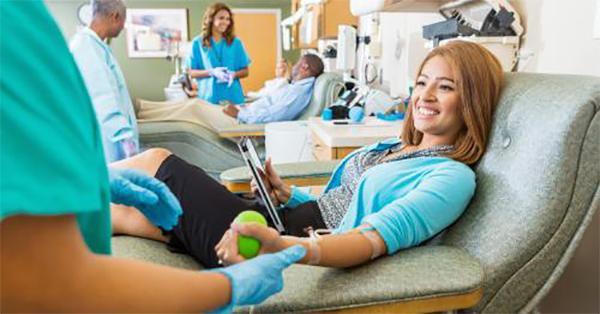Local Blood Banks Drying Up
By Michael Brooks, Staff Writer January is National Blood Donor Month and blood donations are urgently needed throughout South Texas, including Jackson County. Joby Stortz, South Texas Blood and Tissue Donation Center’s Donation Consultant, said supply is a lot less than usual.
“Right now we are hovering around a three-day supply where we normally have a five-day supply,” Stortz said. Of course COVID-19 adds a lot of problems to the equation, but the blood center has taken lots of precautions to ensure they are following proper guidelines.
“We’ve had to step up our game to comply,” Stortz said. “Of course safety is the number one priority. We are now one hundred percent by appointment only. That way we can keep everyone separated and follow the guidelines. The staff wears the utmost PPE equipment. We are constantly cleaning.”
When the virus first hit, the Blood Center was down to a one-day supply and the situation looked grim.
“When the shutdown happened, we were greatly down,” Storz said. “We were running on a one-day inventory. We stepped up to make sure people understood childbirth and cancer and trauma is still going on so we had a big group come out and donate that helped up move us back up to a three-day supply. “The problem is, this pandemic puts unusual concerns on us because it changed the idea of what working is. With people working from home it is harder to get people to come out and donate. It’s hard to track down the donor base.”
In order to make the process easier for someone who may want to donate blood, the screening survey that potential donors have to take can now be done online, from the donor’s home. So now a person can make their reservation, complete their survey and then when they show up to the blood center they will do a quick Covid screening and then can donate blood.
“The South Texas Blood Center has a blood drive coming up on in February, for Edna High school, and then a second blood drive on March 22 for the American Cancer Society that will be open to anyone that wants to donate.”
Stortz said other blood drives can be put together by anyone, as long as they get a certain number of people to commit to donating.
“Someone could ask if anyone else in the community has the same feelings and see they could see if they can get enough people to get us to put together a drive. We like to have a commitment from around 25 or so people to bring the bus over. With those numbers I expect 20 or so to show up and then a couple not able to donate for various reasons. We would like to be able to get at least 20 units when we do a drive. “
If anyone wants to organize a drive, they can go to www.southtexasblood.org you can sign yourself up and we give you all the prompts to sign up.”
According to the American Red Cross, approximately 36,000 units of red blood cells are needed every day in the United States and nearly 7,000 units of platelets and 10,000 units of plasma are needed daily in the United States.
Along with that, nearly 21 million blood components are transfused each year in the United States. The average red blood cell transfusion is approximately three units. And of course, the blood type most often requested by hospitals is Type O.
The Red Cross also states Sickle Cell disease affects 90,000 to 100,000 people in the United States. About 1,000 babies are born with the disease each year. Sickle Cell patients can require blood transfusions throughout their lives.
According to the American Cancer Society, more than 1.8 million people are expected to be diagnosed with cancer in 2021, and many of them will need blood, sometimes daily, during their chemotherapy treatment.
The Red Cross also offers these statistics:
• A single car accident victim can require as many as 100 units of blood.
• One donation can potentially save three lives.
• In the United States, every two seconds someone needs blood.
• Less than 38 percent of the population is eligible to give blood or platelets.

